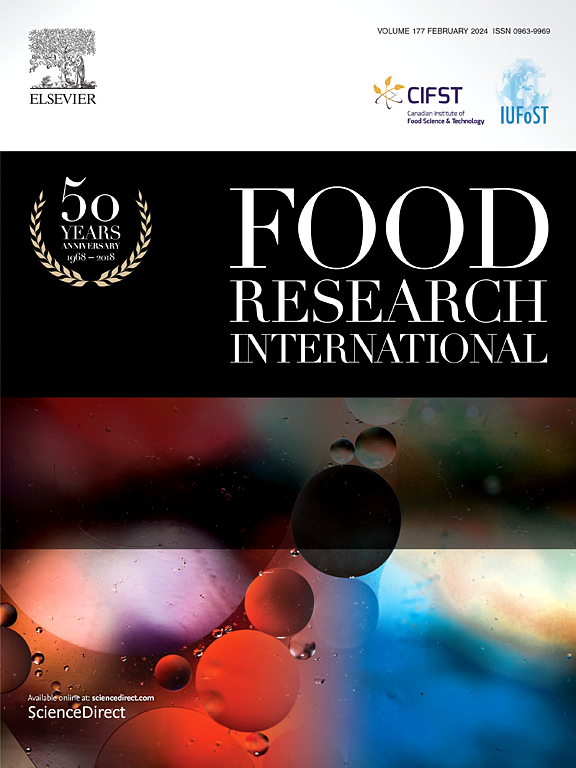猪肉油脂中蜂胶提取物抗氧化活性的动力学-热力学研究
IF 7
1区 农林科学
Q1 FOOD SCIENCE & TECHNOLOGY
引用次数: 0
摘要
本研究旨在探讨蜂胶提取物(PE)控制猪肉油脂氧化的动力学-热力学机理。制备的p本文章由计算机程序翻译,如有差异,请以英文原文为准。

Kinetics-thermodynamics of the antioxidant activity of propolis extracts in pork pâté
This study aimed to evaluate the kinetic-thermodynamic mechanism of propolis extracts (PE) in controlling lipid oxidation in pork pâté. The pâtés were prepared and supplemented with green PE, brown PE, or a blend of these, or erythorbate, and stored under accelerated shelf life conditions. Oxidative stability was monitored by measuring conjugated dienes, peroxides (PV), and TBARS. From the PV values, kinetic data (peroxide formation constant [k], shelf life [SL], and activation energy [Ea]) and thermodynamic data (enthalpy, entropy, and Gibbs free energy) of lipid oxidation were estimated. All PE inhibited the formation of lipid oxidation more effectively than erythorbate. Lipid oxidation was characterized as a first-order reaction, following Arrhenius's Law. The reaction was also characterized as endothermic and nonspontaneous. Principal component analysis and cluster analysis elucidated the kinetic thermodynamic antioxidant mechanism of PE in controlling pâté oxidation by reducing k and increasing SL, Ea, enthalpy, and Gibbs free energy.
求助全文
通过发布文献求助,成功后即可免费获取论文全文。
去求助
来源期刊

Food Research International
工程技术-食品科技
CiteScore
12.50
自引率
7.40%
发文量
1183
审稿时长
79 days
期刊介绍:
Food Research International serves as a rapid dissemination platform for significant and impactful research in food science, technology, engineering, and nutrition. The journal focuses on publishing novel, high-quality, and high-impact review papers, original research papers, and letters to the editors across various disciplines in the science and technology of food. Additionally, it follows a policy of publishing special issues on topical and emergent subjects in food research or related areas. Selected, peer-reviewed papers from scientific meetings, workshops, and conferences on the science, technology, and engineering of foods are also featured in special issues.
 求助内容:
求助内容: 应助结果提醒方式:
应助结果提醒方式:


